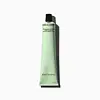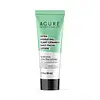What's inside
What's inside
 Key Ingredients
Key Ingredients

 Benefits
Benefits

 Concerns
Concerns

 Ingredients Side-by-side
Ingredients Side-by-side

Water
Skin ConditioningCetyl Alcohol
EmollientGlyceryl Stearate Se
EmulsifyingCetearyl Alcohol
EmollientHelianthus Annuus Seed Oil
EmollientHeptyl Undecylenate
EmollientPropanediol
SolventDicaprylyl Ether
EmollientNiacinamide
SmoothingPolyglyceryl-6 Distearate
EmulsifyingGlycerin
HumectantPotassium Cetyl Phosphate
EmulsifyingGlyceryl Caprylate
EmollientJojoba Esters
EmollientFructose
HumectantPolyglyceryl-3 Beeswax
EmulsifyingSodium Benzoate
MaskingXanthan Gum
EmulsifyingPotassium Sorbate
PreservativeCitric Acid
BufferingGlyceryl Undecylenate
EmollientSimmondsia Chinensis Seed Oil
EmollientEchinacea Purpurea Extract
MoisturisingWithania Somnifera Root Extract
Skin ConditioningPelargonium Graveolens Oil
MaskingGanoderma Lucidum Extract
Skin ProtectingAloe Barbadensis Leaf Juice
Skin ConditioningTocopherol
AntioxidantMyristyl Alcohol
EmollientStearyl Alcohol
EmollientPotassium Phosphate
BufferingCedrus Atlantica Bark Oil
MaskingMaltodextrin
AbsorbentMoringa Oleifera Seed Extract
Skin ConditioningCananga Odorata Flower Oil
MaskingCamellia Sinensis Leaf Extract
AntimicrobialGlycine Soja Oil
EmollientSodium Riboflavin Phosphate
Skin ConditioningPotassium Hydroxide
BufferingBixa Orellana Seed Oil
EmollientCitronellol
PerfumingGeraniol
PerfumingLinalool
PerfumingBenzyl Benzoate
AntimicrobialWater, Cetyl Alcohol, Glyceryl Stearate Se, Cetearyl Alcohol, Helianthus Annuus Seed Oil, Heptyl Undecylenate, Propanediol, Dicaprylyl Ether, Niacinamide, Polyglyceryl-6 Distearate, Glycerin, Potassium Cetyl Phosphate, Glyceryl Caprylate, Jojoba Esters, Fructose, Polyglyceryl-3 Beeswax, Sodium Benzoate, Xanthan Gum, Potassium Sorbate, Citric Acid, Glyceryl Undecylenate, Simmondsia Chinensis Seed Oil, Echinacea Purpurea Extract, Withania Somnifera Root Extract, Pelargonium Graveolens Oil, Ganoderma Lucidum Extract, Aloe Barbadensis Leaf Juice, Tocopherol, Myristyl Alcohol, Stearyl Alcohol, Potassium Phosphate, Cedrus Atlantica Bark Oil, Maltodextrin, Moringa Oleifera Seed Extract, Cananga Odorata Flower Oil, Camellia Sinensis Leaf Extract, Glycine Soja Oil, Sodium Riboflavin Phosphate, Potassium Hydroxide, Bixa Orellana Seed Oil, Citronellol, Geraniol, Linalool, Benzyl Benzoate
Water
Skin ConditioningCetearyl Alcohol
EmollientCarthamus Tinctorius Seed Oil
MaskingGlyceryl Stearate Citrate
EmollientCocoglycerides
EmollientAloe Barbadensis Leaf Juice
Skin ConditioningHelianthus Annuus Seed Oil
EmollientGlyceryl Laurate
EmollientTheobroma Cacao Seed Butter
EmollientSqualane
EmollientTocopherol
AntioxidantNiacinamide
SmoothingTocopheryl Acetate
AntioxidantCeramide NP
Skin ConditioningOryza Sativa Bran Oil
EmollientOenothera Biennis Oil
EmollientArgania Spinosa Kernel Oil
EmollientChamomilla Recutita Flower Extract
MaskingCalendula Officinalis Flower Extract
MaskingGlycerin
HumectantXanthan Gum
EmulsifyingSodium Levulinate
Skin ConditioningGlyceryl Caprylate
EmollientPolyglutamic Acid
Skin ConditioningPropanediol
SolventSodium Phytate
Potassium Sorbate
PreservativeSodium Anisate
AntimicrobialCitric Acid
BufferingWater, Cetearyl Alcohol, Carthamus Tinctorius Seed Oil, Glyceryl Stearate Citrate, Cocoglycerides, Aloe Barbadensis Leaf Juice, Helianthus Annuus Seed Oil, Glyceryl Laurate, Theobroma Cacao Seed Butter, Squalane, Tocopherol, Niacinamide, Tocopheryl Acetate, Ceramide NP, Oryza Sativa Bran Oil, Oenothera Biennis Oil, Argania Spinosa Kernel Oil, Chamomilla Recutita Flower Extract, Calendula Officinalis Flower Extract, Glycerin, Xanthan Gum, Sodium Levulinate, Glyceryl Caprylate, Polyglutamic Acid, Propanediol, Sodium Phytate, Potassium Sorbate, Sodium Anisate, Citric Acid
 Reviews
Reviews

Ingredients Explained
These ingredients are found in both products.
Ingredients higher up in an ingredient list are typically present in a larger amount.
Aloe Barbadensis Leaf Juice comes from leaves of the aloe plant. Aloe Barbadensis Leaf Juice is best known for helping to soothe sunburns. It is also anti-inflammatory, moisturizing, antiseptic, and can help heal wounds.
Aloe is packed with good stuff including Vitamins A, C, and E. These vitamins are antioxidants, which help fight free-radicals and the damage they may cause. Free-radicals are molecules that may damage your skin cells, such as pollution.
Aloe Barbadensis Leaf Juice also contains sugars. These sugars come in the form of monosaccharides and polysaccharides, folic acid, and choline. These sugars are able to help bind moisture to skin.
It also contains minerals such as calcium, 12 anthraquinones, fatty acids, amino acids, and Vitamin B12.
Learn more about Aloe Barbadensis Leaf JuiceCetearyl alcohol is a mixture of two fatty alcohols: cetyl alcohol and stearyl alcohol. It is mainly used as an emulsifier. Emulsifiers help prevent the separation of oils and products. Due to its composition, it can also be used to thicken a product or help create foam.
Cetearyl alcohol is an emollient. Emollients help soothe and hydrate the skin by trapping moisture.
Studies show Cetearyl alcohol is non-toxic and non-irritating. The FDA allows products labeled "alcohol-free" to have fatty alcohols.
This ingredient is usually derived from plant oils such as palm, vegetable, or coconut oils. There is debate on whether this ingredient will cause acne.
Due to the fatty acid base, this ingredient may not be Malassezia folliculitis safe.
Learn more about Cetearyl AlcoholCitric Acid is an alpha hydroxy acid (AHA) naturally found in citrus fruits like oranges, lemons, and limes.
Like other AHAs, citric acid can exfoliate skin by breaking down the bonds that hold dead skin cells together. This helps reveal smoother and brighter skin underneath.
However, this exfoliating effect only happens at high concentrations (20%) which can be hard to find in cosmetic products.
Due to this, citric acid is usually included in small amounts as a pH adjuster. This helps keep products slightly more acidic and compatible with skin's natural pH.
In skincare formulas, citric acid can:
While it can provide some skin benefits, research shows lactic acid and glycolic acid are generally more effective and less irritating exfoliants.
Most citric acid used in skincare today is made by fermenting sugars (usually from molasses). This synthetic version is identical to the natural citrus form but easier to stabilize and use in formulations.
Read more about some other popular AHA's here:
Learn more about Citric AcidGlycerin is already naturally found in your skin. It helps moisturize and protect your skin.
A study from 2016 found glycerin to be more effective as a humectant than AHAs and hyaluronic acid.
As a humectant, it helps the skin stay hydrated by pulling moisture to your skin. The low molecular weight of glycerin allows it to pull moisture into the deeper layers of your skin.
Hydrated skin improves your skin barrier; Your skin barrier helps protect against irritants and bacteria.
Glycerin has also been found to have antimicrobial and antiviral properties. Due to these properties, glycerin is often used in wound and burn treatments.
In cosmetics, glycerin is usually derived from plants such as soybean or palm. However, it can also be sourced from animals, such as tallow or animal fat.
This ingredient is organic, colorless, odorless, and non-toxic.
Glycerin is the name for this ingredient in American English. British English uses Glycerol/Glycerine.
Learn more about GlycerinGlyceryl Caprylate comes from glycerin and caprylic acid, a fatty acid from coconut. It has emollient and emulsifier properties.
As an emollient, it helps hydrate your skin. Emollients work by creating a barrier on your skin to trap moisture in, helping to keep your skin soft and smooth.
On the other hand, emulsifiers prevent ingredients (such as oil and water) from separating.
Learn more about Glyceryl CaprylateHelianthus Annuus Seed Oil is the oil derived from the seeds of a Sunflower. Sunflower seed oil is non-fragrant. It is an emollient, meaning it helps to soften the skin.
Sunflower seed oil contains many fatty acids. The fatty acids found in sunflower seeds include (from highest amount to least): linoleic acid, myristic acid, palmitic acid, stearic acid, arachidic acid, oleic acid, and linolenic acid.
These fatty acids help the skin create ceramides. Ceramides play a role in repairing the skin barrier.
Helianthus Annuus Seed Oil helps moisturize the skin. This in turn helps the skin look more rejuvenated and smoother.
Sunflowers are rich in vitamin E.
Historians believe Indigenous cultures of North America domesticated sunflowers before corn. Thus they relied on sunflower oil for a variety of uses. One such use is moisturizing skin and hair.
Sunflower seed oil may not be fungal acne safe. We recommend speaking with a professional if you have any concerns.
Learn more about Helianthus Annuus Seed OilNiacinamide is a multitasking form of vitamin B3 that strengthens the skin barrier, reduces pores and dark spots, regulates oil, and improves signs of aging.
And the best part? It's gentle and well-tolerated by most skin types, including sensitive and reactive skin.
You might have heard of "niacin flush", or the reddening of skin that causes itchiness. Niacinamide has not been found to cause this.
In very rare cases, some individuals may not be able to tolerate niacinamide at all or experience an allergic reaction to it.
If you are experiencing flaking, irritation, and dryness with this ingredient, be sure to double check all your products as this ingredient can be found in all categories of skincare.
When incorporating niacinamide into your routine, look out for concentration amounts. Typically, 5% niacinamide provides benefits such as fading dark spots. However, if you have sensitive skin, it is better to begin with a smaller concentration.
When you apply niacinamide to your skin, your body converts it into nicotinamide adenine dinucleotide (NAD). NAD is an essential coenzyme that is already found in your cells as "fuel" and powers countless biological processes.
In your skin, NAD helps repair cell damage, produce new healthy cells, support collagen production, strengthen the skin barrier, and fight environmental stressors (like UV and pollution).
Our natural NAD levels start to decline with age, leading to slower skin repair, visible aging, and a weaker skin barrier. By providing your skin niacinamide, you're recharging your skin's NAD levels. This leads to stronger, healthier, and younger looking skin.
Another name for vitamin B3 is nicotinamide. This vitamin is water-soluble and our bodies don't store it. We obtain Vitamin B3 from either food or skincare. Meat, fish, wheat, yeast, and leafy greens contain vitamin B3.
The type of niacinamide used in skincare is synthetically created.
Learn more about NiacinamidePotassium Sorbate is a preservative used to prevent yeast and mold in products. It is commonly found in both cosmetic and food products.
This ingredient comes from potassium salt derived from sorbic acid. Sorbic acid is a natural antibiotic and effective against fungus.
Both potassium sorbate and sorbic acid can be found in baked goods, cheeses, dried meats, dried fruit, ice cream, pickles, wine, yogurt, and more.
You'll often find this ingredient used with other preservatives.
Learn more about Potassium SorbatePropanediol is an all-star ingredient. It softens, hydrates, and smooths the skin.
It’s often used to:
Propanediol is not likely to cause sensitivity and considered safe to use. It is derived from corn or petroleum with a clear color and no scent.
Learn more about PropanediolTocopherol (also known as Vitamin E) is a common antioxidant used to help protect the skin from free-radicals and strengthen the skin barrier. It's also fat soluble - this means our skin is great at absorbing it.
Vitamin E also helps keep your natural skin lipids healthy. Your lipid skin barrier naturally consists of lipids, ceramides, and fatty acids. Vitamin E offers extra protection for your skin’s lipid barrier, keeping your skin healthy and nourished.
Another benefit is a bit of UV protection. Vitamin E helps reduce the damage caused by UVB rays. (It should not replace your sunscreen). Combining it with Vitamin C can decrease sunburned cells and hyperpigmentation after UV exposure.
You might have noticed Vitamin E + C often paired together. This is because it is great at stabilizing Vitamin C. Using the two together helps increase the effectiveness of both ingredients.
There are often claims that Vitamin E can reduce/prevent scarring, but these claims haven't been confirmed by scientific research.
Learn more about TocopherolWater. It's the most common cosmetic ingredient of all. You'll usually see it at the top of ingredient lists, meaning that it makes up the largest part of the product.
So why is it so popular? Water most often acts as a solvent - this means that it helps dissolve other ingredients into the formulation.
You'll also recognize water as that liquid we all need to stay alive. If you see this, drink a glass of water. Stay hydrated!
Learn more about WaterXanthan gum is used as a stabilizer and thickener within cosmetic products. It helps give products a sticky, thick feeling - preventing them from being too runny.
On the technical side of things, xanthan gum is a polysaccharide - a combination consisting of multiple sugar molecules bonded together.
Xanthan gum is a pretty common and great ingredient. It is a natural, non-toxic, non-irritating ingredient that is also commonly used in food products.
Learn more about Xanthan Gum